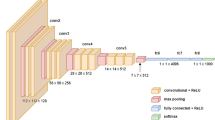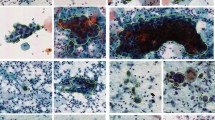Abstract
The main reason for leading death in female is cervical cancer. The human Papillomavirus is responsible for all cervical cancer cases. There are several diagnostic procedures to find cervical cancer that includes Pap test, liquid-based cytology, colposcopy and HPV test. Early diagnosis is crucial for successful treatment and improved survival rates. In medical image analysis, methods of deep learning are showing promising results for the identification and grading of cervical carcinoma. The work uses dataset of cervical smear images and three cutting-edge deep learning models like ResNet50V2, InceptionV3, and Xception are applied and analysed for prediction of cervical cancer. The Models are verified using cross-validation and the performance are assessed using metrics like accuracy, precision, recall, and F1 score. According to the analysis, ResNet50V2 shows the highest accuracy. The obtained results imply that without the need for invasive procedures, deep learning techniques have the ability to accurately classify cervical cancer and greatly enhance early diagnosis.












Similar content being viewed by others
Data Availability
No associated data. The study is performed on open access database.
References
American Cancer Society. (2021). Cervical Cancer. Retrieved from https://www.cancer.org/cancer/cervical-cancer.html
Cheng, F. H., & Hsu, N. R. (2017). A computer-aided pap smear screening system. In 2017 International Conference on Computational Science and Computational Intelligence (CSCI). IEEE, 2017.
Kuko, M., & Pourhomayoun, M. (2019). An ensemble machine learning method for single and clustered cervical cell classification. In 2019 IEEE 20th International Conference on Information Reuse and Integration for Data Science (IRI). IEEE, 2019.
Dillak, R. Y., & Sudarmadji, P. W. (2021) Cervical Cancer classification using elman recurrent neural network and genetic algorithm. In 2021 5th International Conference on Informatics and Computational Sciences (ICICoS). IEEE, 2021.
Li, D., Zhang, Y., Liu, Q., & Hu, X. (2019). Deep learning for cervical cancer detection and classification: A review. Current Medical Imaging Reviews, 15(3), 230–237.
Erkaymaz, O., & Palabaş, T. (2018). Classification of cervical cancer data and the effect of random subspace algorithms on classification performance. In 2018 26th Signal Processing and Communications Applications Conference (SIU). IEEE, 2018.
Chen, L., Wang, M., & Yang, W. (2021). Deep learning approaches for cervical cancer screening: A systematic review. Frontiers in Oncology, 11, 683160.
Zhi, L., & Carneiro, G. (2017). Evaluation of three algorithms for the segmentation of overlapping cervical cells. IEEE Journal of Biomedical and Health Informatics, 21(2), 441–450. https://doi.org/10.1109/JBHI.2016.2519686
Huang, Y., Qiu, X., & Lv, W. (2019). Deep learning for cervical cancer screening: A systematic review. Journal of gynecologic oncology, 30(5), e75. https://doi.org/10.3802/jgo.2019.30.e75
Omone, O. M., Gbenimachor, A. U., Kovács, L., & Kozlovszky, M. (2021) Knowledge estimation with HPV and cervical cancer risk factors using logistic regression. in 2021 IEEE 15th International Symposium on Applied Computational Intelligence and Informatics (SACI), Timisoara, Romania, pp. 000381–000386 https://doi.org/10.1109/SACI51354.2021.9465585
Andersen, K. K., Kjaerulff, C. M., Larsen, L. E. B., & Andersen, L. S. (2006). Segmentation of cervical cell nuclei in high-resolution microscope images: A new algorithm and a web-based software framework. Computerized Medical Imaging and Graphics, 30(4), 231–242. https://doi.org/10.1016/j.compmedimag.2006.05.004
Lee, H. S., Kim, Y. J., Kim, J. K., Kim, K. H., & Park, H. K. (2019). Cervical cancer detection using deep learning-based analysis of cytology images: A review. Journal of Clinical Medicine, 8(9), 1370.
Liu, M., Yu, L., Zhang, X., & Yu, Q. (2021). Deep learning for cervical cancer diagnosis: A systematic review and meta-analysis. Frontiers in Oncology, 11, 644672.
Elakkiya, R., Subramaniyaswamy, V., Vijayakumar, V., & Mahanti, A. (2022). Cervical cancer diagnostics healthcare system using hybrid object detection adversarial networks. IEEE Journal of Biomedical and Health Informatics, 26(4), 1464–1471. https://doi.org/10.1109/JBHI.2021.3094311. Epub 2022 Apr 14 PMID: 34214045.
Das, N. R., Devi, T. H., & Singh, K. R. (2019). Automated cervical cancer detection and diagnosis using deep learning techniques: A systematic review. Journal of Ambient Intelligence and Humanized Computing, 10(5), 1989–2007.
Liu, J., Ding, L., Li, C., Yang, J., & Lin, X. (2019). Deep learning for cervical cancer diagnosis using histology images: A comprehensive review. IEEE access, 7, 66760–66777. https://doi.org/10.1109/access.2019.2918428
Mehta, S., & Shukla, A. (2020). Deep learning in cervical cancer screening and diagnosis: A review. Expert Review of Anticancer Therapy, 20(8), 657–664. https://doi.org/10.1080/14737140.2020.1790926
Alghamdi, N., Al-Rahbi, A., Al-Widyan, M., Alsubaie, M., & Alsharif, M. (2020). Deep learning for cervical cancer classification and segmentation: A review. Healthcare (Basel), 8(4), 449.
Kumawat, G., Vishwakarma, S. K., Chakrabarti, P., Chittora, P., Chakrabarti, T., & Lin, J. C. (2023). Prognosis of cervical cancer disease by applying machine learning techniques. Journal of Circuits, Systems and Computers, 32(01), 2350019.
Saha, S. K., Banik, S., Basu, S., & Sarkar, R. (2020). Automated cervical cancer diagnosis using convolutional neural networks. Biomedical Signal Processing and Control, 55, 101644.
Srivastava, S. C., Tiwari, P., & Agarwal, S. (2020). Deep learning for cervical cancer detection: A comprehensive review. Journal of Ambient Intelligence and Humanized Computing, 11(6), 2565–2583.
Sharma, A., Mishra, A., Singh, A. K., & Anand, A. (2020). Recent advances in deep learning for cervical cancer diagnosis and classification. Journal of Ambient Intelligence and Humanized Computing, 11(6), 2451–2467.
Sharma, R., Pachori, R. B., & Acharya, U. R. (2019). Cervical cancer detection using deep learning techniques: A systematic review and meta-analysis. Computers in Biology and Medicine, 109, 1–10.
Zhang, S., et al. (2021). Deep learning for cervical cancer screening: A systematic review and meta-analysis. Frontiers in Oncology, 11, 9776. https://doi.org/10.3389/fonc.2021.659776
Le Ngoc, H., & Huyen, K. V. (2023). An approach of cervical cancer diagnosis using class weighting and oversampling with Keras. TELKOMNIKA Telecommunication Computing Electronics and Control, 21(1), 142–149.
Usha Rani, K., Harish, M. P., & Kumari, R. P. (2021). Automated cervical cancer detection using deep learning based on multispectral images. Journal of Ambient Intelligence and Humanized Computing, 12(4), 4201–4212.
Yadav, R. K., Garg, R., & Tiwari, A. (2021). Automated detection of cervical cancer using deep learning techniques: A review. Journal of Medical Systems, 45(3), 1–12.
Zhang, Y., et al. (2021). Deep learning for cervical cancer detection using whole-slide pathological images: A comprehensive review. Frontiers in Oncology, 11, 72242. https://doi.org/10.3389/fonc.2021.672242
Chen, Y., et al. (2020). Deep learning for cervical cancer screening and diagnosis: A comprehensive review. International Journal of Environmental Research and Public Health, 17(19), 7008. https://doi.org/10.3390/ijerph17197008
Zhang, X., Zhang, S., & Zhang, Q. (2019). Deep learning for cervical cancer diagnosis: A review and meta-analysis. Journal of healthcare engineering, 2019, 3642582. https://doi.org/10.1155/2019/3642582
Ghoneim, A., Muhammad, G., & Hossain, M. S. (2020). Cervical cancer classification using convolutional neural networks and extreme learning machines. Future Generation Computer Systems, 102, 643–649.
Alsubai, S., Alqahtani, A., Sha, M., Almadhor, A., Abbas, S., Mughal, H., & Gregus, M. (2023). Privacy preserved cervical cancer detection using convolutional neural networks applied to pap smear images. Computational and Mathematical Methods in Medicine, 8(2023), 9676206. https://doi.org/10.1155/2023/9676206.PMID:37455684;PMCID:PMC10349677
Tan, S. L., Selvachandran, G., Ding, W., et al. (2024). Cervical cancer classification from pap smear images using deep convolutional neural network models. Interdiscip Sci Comput Life Sci, 16, 16–38. https://doi.org/10.1007/s12539-023-00589-5
Kalbhor, M., Shinde, S., Joshi, H., & Wajire, P. (2023). Pap smear-based cervical cancer detection using hybrid deep learning and performance evaluation. Computer Methods in Biomechanics and Biomedical Engineering: Imaging & Visualization, 11(5), 1615–1624. https://doi.org/10.1080/21681163.2022.2163704
Rastogi, P., Khanna, K., & Singh, V. (2023). Classification of single‐cell cervical pap smear images using EfficientNet. Expert Systems. https://doi.org/10.1111/exsy.13418
Priyankaa, J., & Bhadri Rajub, M. S. V. S. (2021). Machine learning approach for prediction of cervical cancer. Turkish Journal of Computer and Mathematics Education (TURCOMAT), 12, 3050–3058.
Tripathi, A. (2021) Classification of cervical cancer using deep learning algorithm. In Proceedings of the Fifth International Conference on Intelligent Computing and Control Systems (ICICCS 2021), Madurai, India, pp. 1210–1218.
Singh, S. K., & Goyal, A. (2022). Performance analysis of machine learning algorithms for cervical cancer detection. In Research Anthology on Medical Informatics in Breast and Cervical Cancer, IGI Global, pp. 347–370.
Madhukar, R. K., Joshi, R. C., & Dutta, M. K. (2021) A robust deep learning and feature fusion-based multi-class classification of cervical cells.
Moldovan, D. (2020) Cervical cancer diagnosis using a chicken swarm optimization based machine learning method. In International Conference on eHealth and Bioengineering (EHB), IASI, Romania
Alpan, K. (2021). Performance evaluation of classification algorithms for early detection of behavior determinant based cervical cancer. In 5th International Symposium on Multidisciplinary Studies and Innovative Technologies (ISMSIT), pp. 706–710.
Funding
No funding is associated with this study.
Author information
Authors and Affiliations
Contributions
Somasundaram Devaraj—Experimentation and supervision, Nirmala Madian*—implementation of research, result analysis, manuscript drafting, M Menagadevi—manuscript drafting and database management, R Remya—database analysis and supervision.
Corresponding author
Ethics declarations
Conflict of interest
Authors have no conflict of interest.
Additional information
Publisher's Note
Springer Nature remains neutral with regard to jurisdictional claims in published maps and institutional affiliations.
Rights and permissions
Springer Nature or its licensor (e.g. a society or other partner) holds exclusive rights to this article under a publishing agreement with the author(s) or other rightsholder(s); author self-archiving of the accepted manuscript version of this article is solely governed by the terms of such publishing agreement and applicable law.
About this article
Cite this article
Devaraj, S., Madian, N., Menagadevi, M. et al. Deep Learning Approaches for Analysing Papsmear Images to Detect Cervical Cancer. Wireless Pers Commun 135, 81–98 (2024). https://doi.org/10.1007/s11277-024-10986-8
Accepted:
Published:
Issue Date:
DOI: https://doi.org/10.1007/s11277-024-10986-8




